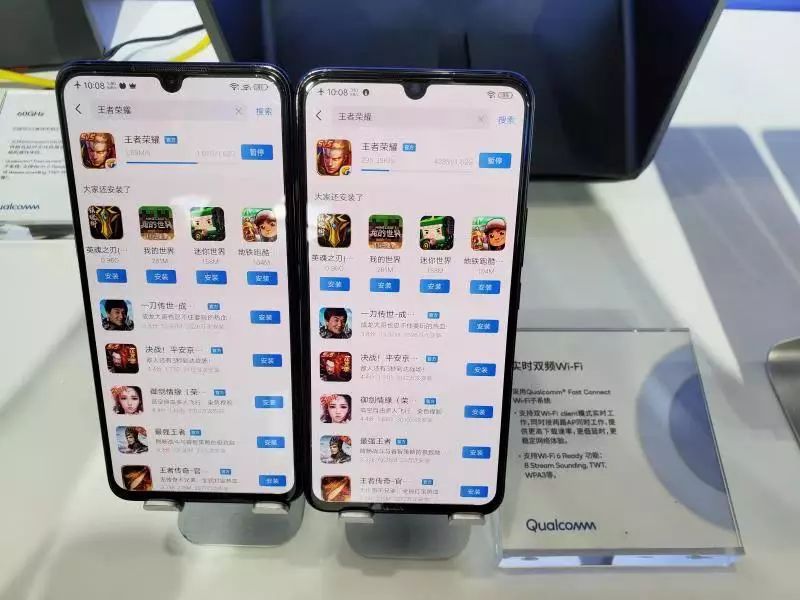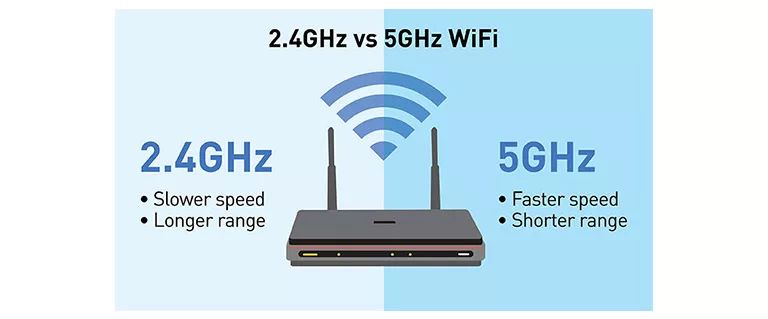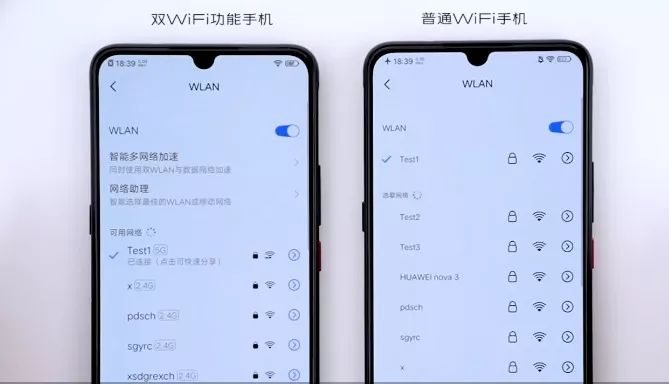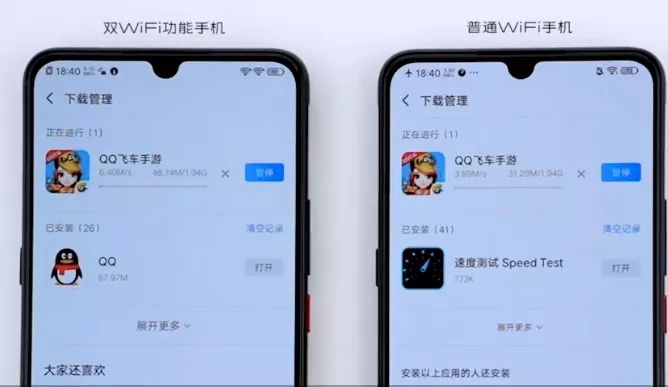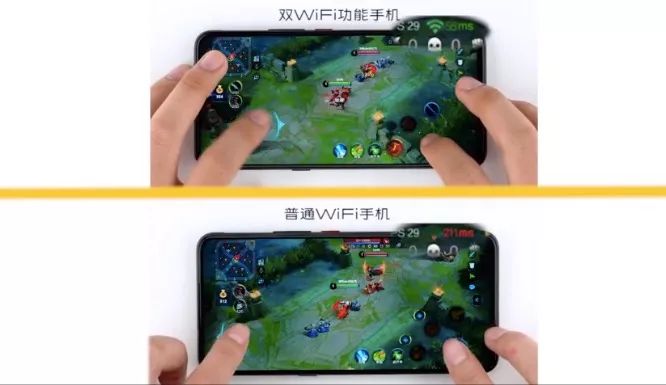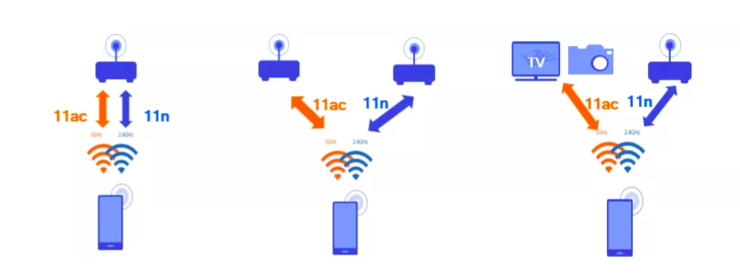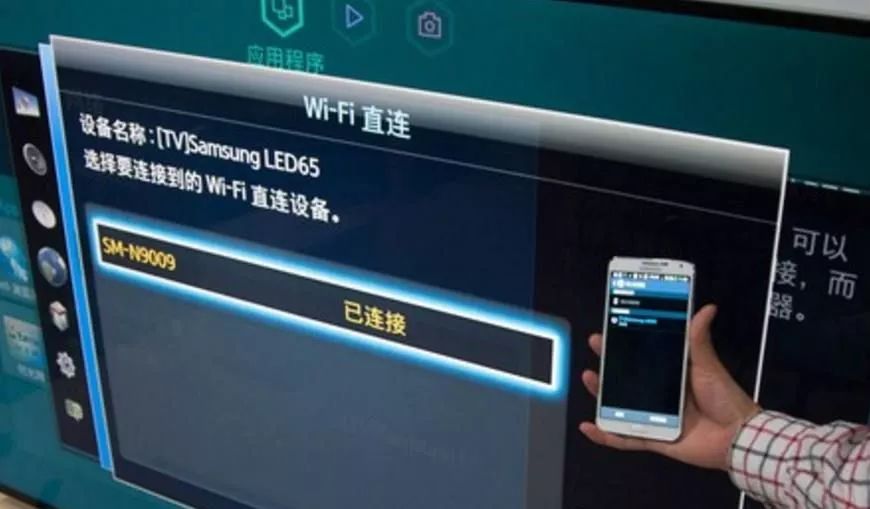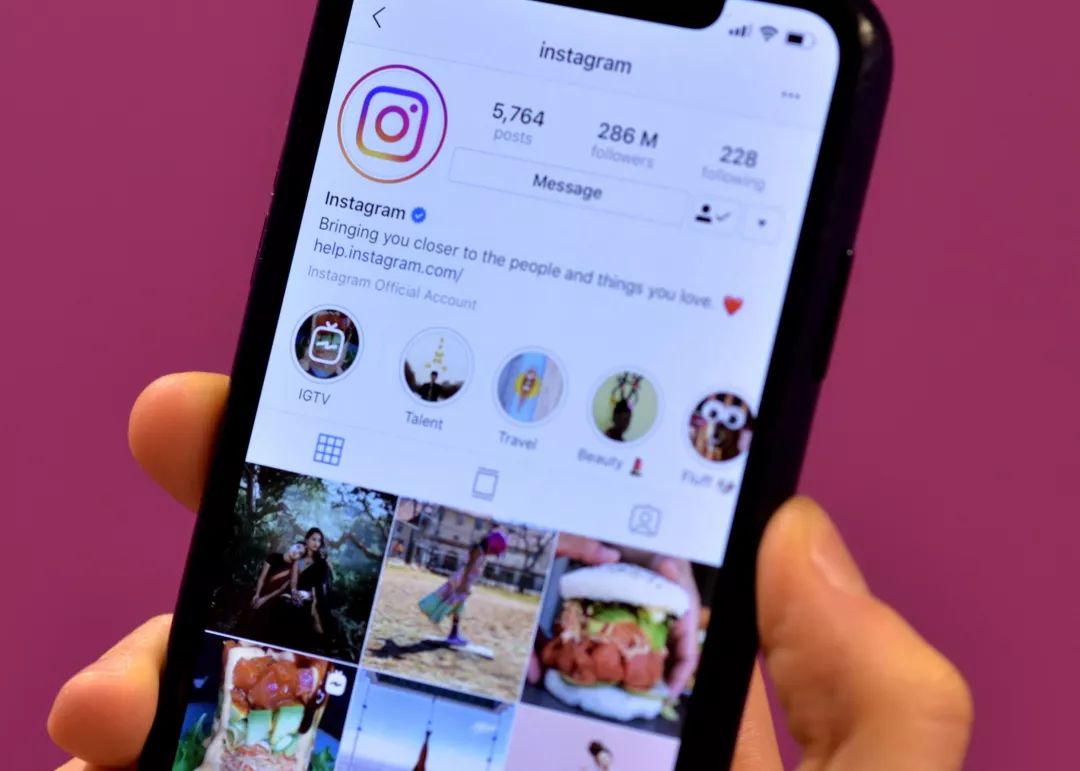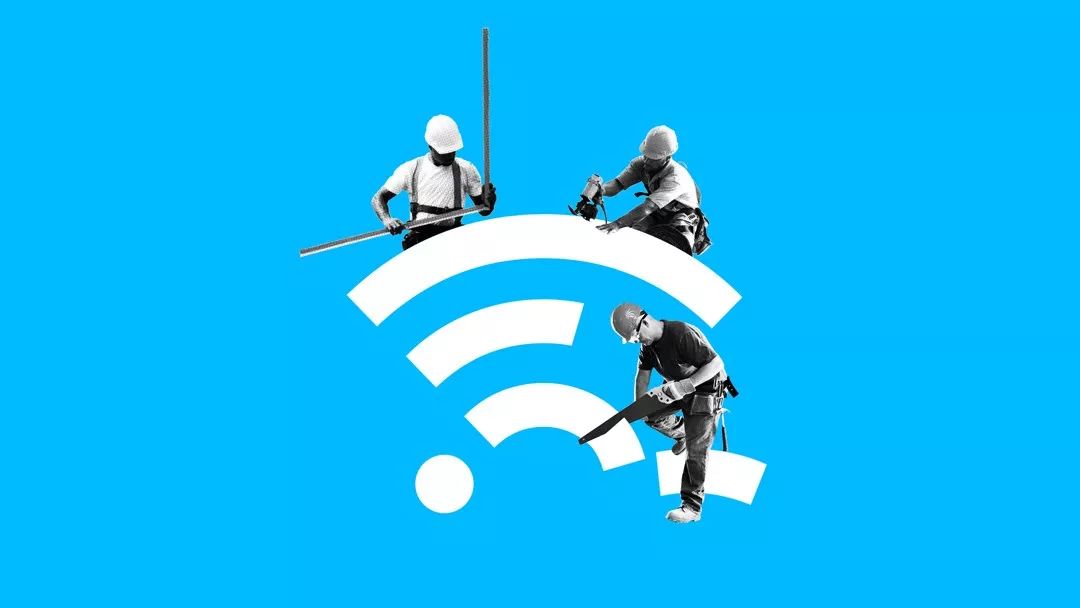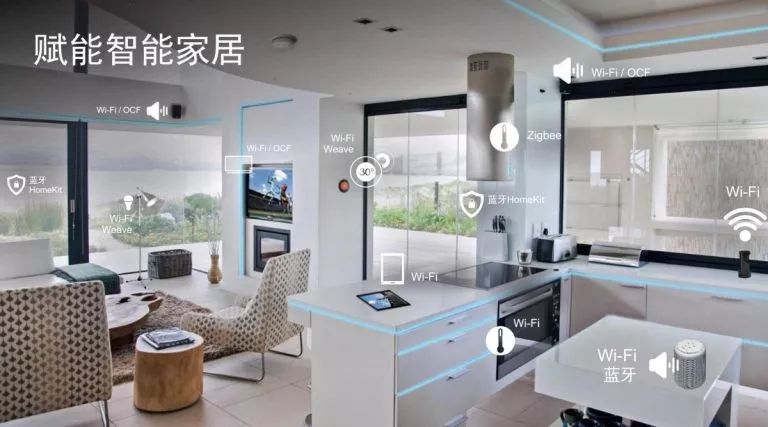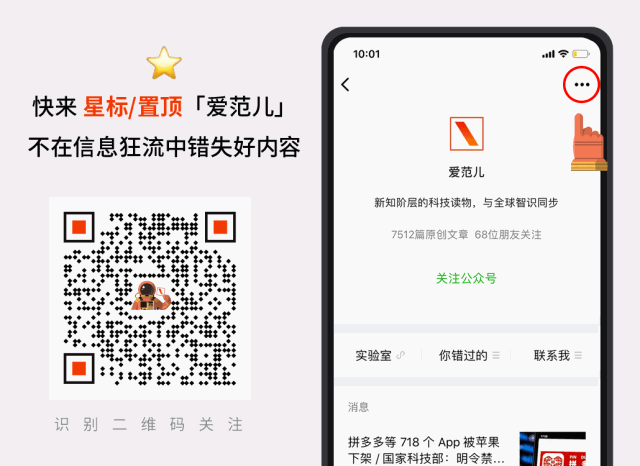Skip to content


Editor’s Note: The image shows a comparison test of the vivo iQOO Pro phone in dual Wi-Fi and single Wi-Fi mode at Qualcomm’s booth during this week’s Tianyi Smart Eco Expo.
A few days ago, the Wi-Fi Alliance announced the launch of the Wi-Fi 6 certification program. As mentioned in a previous article by Ai Fan Er, this will be a new generation of communication technology as important as 5G. However, due to the limited number of supported devices and the high cost of routers, most people still find it difficult to experience.
In today’s world, where Wi-Fi has become a necessity, the speed and stability of Wi-Fi can even affect our quality of life. For example, playing a game of “Honor of Kings” at home on the weekend, if the router is separated by one or two walls, it may often experience high latency and lag.
Against this backdrop, Wi-Fi technology is continuously evolving.
In addition to the latest Wi-Fi 6, real-time dual-band Wi-Fi technology is quietly changing our internet experience. Compared to Wi-Fi 6, real-time dual-band Wi-Fi technology does not require a specific router; just getting a phone equipped with real-time dual-band Wi-Fi technology allows for easy access to this “brand new version”.
What is real-time dual-band Wi-Fi technology?
Simply put, real-time dual-band Wi-Fi technology allows a phone to connect to two Wi-Fi networks simultaneously, achieving increased internet speed without changing the bandwidth, also known as “dual Wi-Fi acceleration”.
The “dual Wi-Fi” here refers to the two frequency bands commonly connected to Wi-Fi at home: 2.4GHz and 5GHz. Each band has its advantages; 2.4GHz Wi-Fi is known for its strong wall penetration but has a slower rate than 5GHz and is more prone to interference.
On the other hand, 5GHz has more available channels, providing better resistance to interference and faster rates, but it suffers more loss when penetrating walls.
It can be said that the commonly used 2.4GHz and 5GHz frequency bands each have their strengths; my usual connection habit is to connect to 2.4GHz in the bedroom and 5GHz in the living room.
If we compare Wi-Fi channels to a highway, 5GHz has more lanes than 2.4GHz, allowing more vehicles to travel at high speeds.
There are only 3 non-interfering channels in 2.4GHz, while there are 22 in 5GHz. Image from: Zhihu
However, ordinary smartphones can only connect to one of the 2.4GHz and 5GHz bands, making it difficult to have both advantages. So, can we combine the benefits of both bands?
This is what real-time dual-band Wi-Fi technology aims to achieve, allowing the two Wi-Fi bands to complement each other, resulting in higher speeds, lower latency, and more stability.
So how does real-time dual-band Wi-Fi technology perform in practice? Currently, the iQOO Pro and the newly released vivo NEX 3 (both equipped with Qualcomm Snapdragon 855 Plus) support real-time dual-band Wi-Fi technology. Recently, iQOO product manager @GeLanV also released a video demonstrating the “dual Wi-Fi acceleration” in action.
From the video, it can be seen that in the same network environment, when the phone connects to two Wi-Fi networks simultaneously, the speed of downloading games is almost twice that of a typical smartphone. This is because the phone can simultaneously utilize the channels of both frequency bands, making the transmission speed effectively the sum of the two Wi-Fi connections.
In another simulated public network environment test, the download speed of “dual Wi-Fi” improved by 296% compared to single Wi-Fi (single 2.4GHz) in an iQIYI caching speed test, while Douyin’s loading speed improved by 74.4%, and webpage loading speed improved by 44.5%.
In gaming, when using the “dual Wi-Fi” feature to play “Honor of Kings”, network latency is significantly lower than with a single Wi-Fi connection, maintaining a steady green connection that is smooth as silk, greatly enhancing the gaming experience.
It is worth mentioning that real-time dual-band Wi-Fi technology not only improves download speeds but is also a boon for gamers using 10M small bandwidth.
Through a collaboration between Qualcomm and Tencent, the Tencent Mobile Game Accelerator has also integrated real-time dual-band Wi-Fi technology, hoping to resolve lag issues in real-time gaming. Currently, major popular games can already enjoy the acceleration effects of dual Wi-Fi technology.
Additionally, the “dual Wi-Fi” connected through real-time dual-band Wi-Fi technology does not necessarily have to be two frequency bands from the same AP (Wireless Access Point); it can also connect to Wi-Fi frequency bands from two different router AP nodes.
Nowadays, operators like China Mobile and China Unicom often offer free broadband with their packages, so many households often have more than one broadband connection. Real-time dual-band Wi-Fi technology can make better use of these broadband connections.
When one Wi-Fi frequency band encounters issues, it can immediately transfer more network transmission tasks to the other band, ensuring that the internet speed on the phone remains stable and fast.
In addition to faster internet access without lags, real-time dual-band Wi-Fi technology also has a “secret weapon”.
From 2G to 5G, from dial-up internet to gigabit fiber, the advancement of communication technology has brought us the most intuitive experience of faster internet speeds. However, in the future of the Internet of Things, internet speed may not be the most important feature of communication technology.
As the number of connected devices in our homes increases, from smartphones, tablets, and laptops to smart TVs, smart speakers, and smart light bulbs, the smooth interconnectivity between these devices is becoming increasingly important.
For example, when using Wi-Fi to cast a phone screen to a TV, it often requires a direct Wi-Fi connection, but the phone cannot be connected to the internet while casting, or switching can cause significant lag. Real-time dual-band Wi-Fi technology allows the two frequency bands to cooperate, one connects to the TV while the other connects to the internet, ensuring both tasks can be performed simultaneously.
This technology is also very useful when digital cameras transfer photos to phones via Wi-Fi. Users no longer need to disconnect from the internet while transferring photos; they can share photos directly on social platforms while transferring them.
Currently, major smartphone manufacturers such as Apple, Huawei, and Xiaomi have made the Internet of Things a strategic focus for the future, aiming to seize the initiative before the arrival of IoT-based interconnectivity, and they have higher demands for the interconnectivity experience between devices. Real-time dual-band Wi-Fi technology may soon become a standard feature for smartphone manufacturers.
Although real-time dual-band Wi-Fi does not require a dedicated router to use, it still requires cooperation from chip manufacturers, smartphone manufacturers, and application developers. Currently, Qualcomm has already supported it at the Snapdragon platform level, and most mainstream Android manufacturers use Qualcomm chips, which facilitates the faster implementation of “dual Wi-Fi”.
In the 5G era, the innovation of Wi-Fi technology remains crucial.
Currently, real-time dual-band Wi-Fi technology can bring significant improvements in scenarios with slow internet speeds and unstable networks. But when faster 5G networks and gigabit-level home broadband become widespread, will it still have a place?
In fact, this is not the case. According to data from the Wi-Fi Alliance, over half of the data worldwide is transmitted via Wi-Fi. Even with the widespread adoption of 5G, Wi-Fi remains essential in many indoor scenarios such as homes and businesses.
As previously mentioned, Wi-Fi 6 can achieve speeds comparable to 5G, support more connected devices, and lower energy consumption, while real-time dual-band Wi-Fi technology can maximize these advantages, providing a comprehensive enhancement to the Wi-Fi experience.
Behind these Wi-Fi technologies, Qualcomm plays a significant role. Besides being the first to propose “dual Wi-Fi” last year, the Qualcomm Snapdragon 855 flagship mobile platform also supports Wi-Fi 6 Ready, making Qualcomm a pioneer in Wi-Fi technology innovation.
As Xiaomi mentioned earlier, the black technology of 2×2 Wi-Fi is actually a feature available only in mid-to-high-end Snapdragon processors, offering higher data throughput and signal coverage while allowing routers to connect directly to smart light bulbs via Bluetooth, forming a centralized networking layout for a seamless and smooth experience in the entire smart home ecosystem.
From the series of Wi-Fi technologies launched by Qualcomm in the past two years, it is clear that the future of Wi-Fi is not just about increasing speed but also about connecting and interacting with various smart devices.
In the future of the Internet of Everything, regardless of which manufacturer’s device becomes the hub of smart homes, it is likely that Qualcomm’s solutions will play a crucial role. The significance of these Wi-Fi technologies in the future wireless network field may be comparable to the importance of Snapdragon processors to Android flagship devices today.

If you like this article, click here


